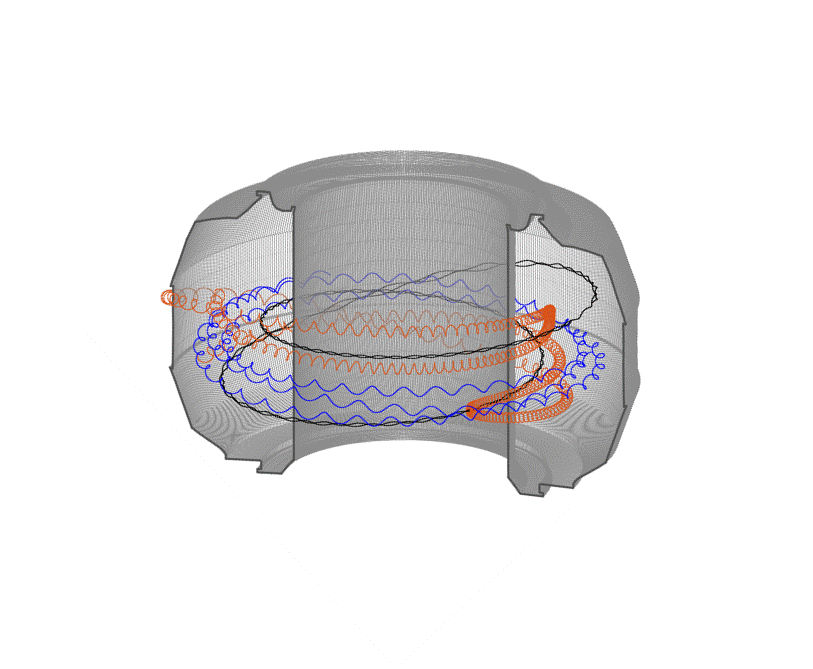
Filter News
Area of Research
- Advanced Manufacturing (8)
- Biological Systems (1)
- Biology and Environment (2)
- Building Technologies (1)
- Clean Energy (37)
- Computational Engineering (1)
- Computer Science (5)
- Fuel Cycle Science and Technology (1)
- Fusion Energy (4)
- Materials (31)
- National Security (4)
- Neutron Science (5)
- Nuclear Science and Technology (15)
- Quantum information Science (2)
- Supercomputing (14)
- Transportation Systems (1)
News Topics
- (-) 3-D Printing/Advanced Manufacturing (21)
- (-) Artificial Intelligence (13)
- (-) Bioenergy (12)
- (-) Cybersecurity (8)
- (-) Microscopy (10)
- (-) Molten Salt (5)
- (-) Nuclear Energy (27)
- (-) Transportation (19)
- Advanced Reactors (8)
- Big Data (8)
- Biology (1)
- Biomedical (9)
- Biotechnology (1)
- Clean Water (6)
- Climate Change (1)
- Composites (5)
- Computer Science (51)
- Critical Materials (4)
- Energy Storage (10)
- Environment (25)
- Exascale Computing (3)
- Frontier (2)
- Fusion (9)
- Grid (8)
- Isotopes (7)
- Machine Learning (5)
- Materials Science (30)
- Mercury (4)
- Nanotechnology (15)
- Neutron Science (26)
- Physics (15)
- Polymers (7)
- Quantum Science (13)
- Security (9)
- Space Exploration (6)
- Summit (11)
- Sustainable Energy (8)
Media Contacts

Fusion scientists from Oak Ridge National Laboratory are studying the behavior of high-energy electrons when the plasma that generates nuclear fusion energy suddenly cools during a magnetic disruption. Fusion energy is created when hydrogen isotopes are heated to millions of degrees...

As leader of the RF, Communications, and Cyber-Physical Security Group at Oak Ridge National Laboratory, Kerekes heads an accelerated lab-directed research program to build virtual models of critical infrastructure systems like the power grid that can be used to develop ways to detect and repel cyber-intrusion and to make the network resilient when disruption occurs.

A tiny vial of gray powder produced at the Department of Energy’s Oak Ridge National Laboratory is the backbone of a new experiment to study the intense magnetic fields created in nuclear collisions.

Amy Moore has found that her pursuit of several degrees and certificates in a variety of subjects is serving her well as she uses her expertise in transportation planning, geographic information science, and information technology to develop intelligent mobility solutions at ORNL. ...

Oak Ridge National Laboratory has developed a salt purification lab to study the viability of using liquid salt that contains lithium fluoride and beryllium fluoride, known as FLiBe, to cool molten salt reactors, or MSRs. Multiple American companies developing advanced reactor technol...

Thanks in large part to developing and operating a facility for testing molten salt reactor (MSR) technologies, nuclear experts at the Energy Department’s Oak Ridge National Laboratory (ORNL) are now tackling the next generation of another type of clean energy—concentrating ...

A shield assembly that protects an instrument measuring ion and electron fluxes for a NASA mission to touch the Sun was tested in extreme experimental environments at Oak Ridge National Laboratory—and passed with flying colors. Components aboard Parker Solar Probe, which will endure th...

It may take a village to raise a child, according to the old proverb, but it takes an entire team of highly trained scientists and engineers to install and operate a state-of-the-art, exceptionally complex ion microprobe. Just ask Julie Smith, a nuclear security scientist at the Depa...

A scientific team led by the Department of Energy’s Oak Ridge National Laboratory has found a new way to take the local temperature of a material from an area about a billionth of a meter wide, or approximately 100,000 times thinner than a human hair. This discove...

Researchers are looking to neutrons for new ways to save fuel during the operation of filters that clean the soot, or carbon and ash-based particulate matter, emitted by vehicles. A team of researchers from the Energy and Transportation Science Division at the Department of En...


